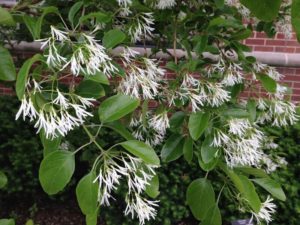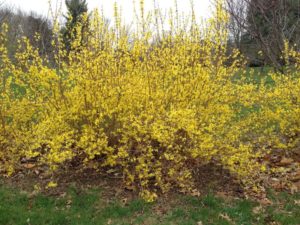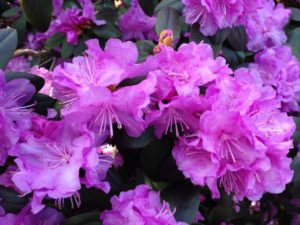Although late winter is generally the ideal time for pruning chores, many of our spring-blooming shrubs are best pruned immediately after flowers have faded.
Trees and shrubs that bloom in early spring, such as forsythia, lilac, honeysuckle, quince and spirea, set their flower buds the previous fall, referred to as “flowering on old wood”. If you prune in late winter, some or all of the bloom potential for spring is sacrificed. By waiting until after flowering, you can enjoy the blossoms first, then attend to pruning chores.
As with any other pruning job, have a goal in mind before you begin cutting. First, any dead, diseased or damaged stems should be completely removed. Young plants and those that have benefited from pruning in recent years may only need light pruning to maintain the desired size or shape. Vigorous shrubs often grow so many stems that the interior leaves of the plant drop due to shading. Removal of excessive growth and crossed branches is a good strategy to remedy such crowding.
Older, overcrowded plants that have been neglected for a number of years may also produce fewer flowers and fruits. Some plants can be cut completely back to the ground to force new branches all at once, including forsythia, rose-of-Sharon, privet, honeysuckle, spirea and lilac. Although the results may look drastic, it is only temporary and within a year or so the new branches will camouflage the old base.
A more gradual rejuvenation process, known as renewal pruning, consists of a three-stage process that results in a completely new plant at the end of three growing seasons. The first year, remove one-third of the oldest, largest-diameter stems completely back to ground level. For example, if a particular shrub has 15 stems coming from the base, remove five of the largest stems completely back to the ground. The second year, remove the next five oldest, largest stems, and the third year remove the last five oldest, largest stems, so that by this time, all stems of the plant are no more than 3 years old.
Make sure that you have the proper pruning equipment for the job. You’ll need sharp, hand-pruning shears for cutting branches up to one-fourth inch in diameter and sharp, lopping shears for branches up to 1 1/2 inches in diameter. Use a pruning saw for all larger branches. Hedge shears should only be used when clipping hedges and shrubs that are pruned to a formal shape.
- Fringetree in bloom Photo credit: Rosie Lerner, Purdue Extension
- Forsythia in bloom Photo credit: Rosie Lerner, Purdue Extension
- Rhododendron in bloom Photo Credit: Rosie Lerner, Purdue Extension
Here’s a list of some common shrubs that flower on old wood that should be pruned soon after flowers fade.
Flowering Almond, Cherry, & Plum
Beautybush
Chokeberry
Cotoneaster
Deutzia
Forsythia
Fringetree
Lilac
Mockorange
Flowering Quince
Rhododendron (and azalea)
Spirea
Viburnum
Weigela
For more information on pruning, see Purdue Extension Bulletin HO-4. https://www.extension.purdue.edu/extmedia/HO/HO-4-W.pdf


